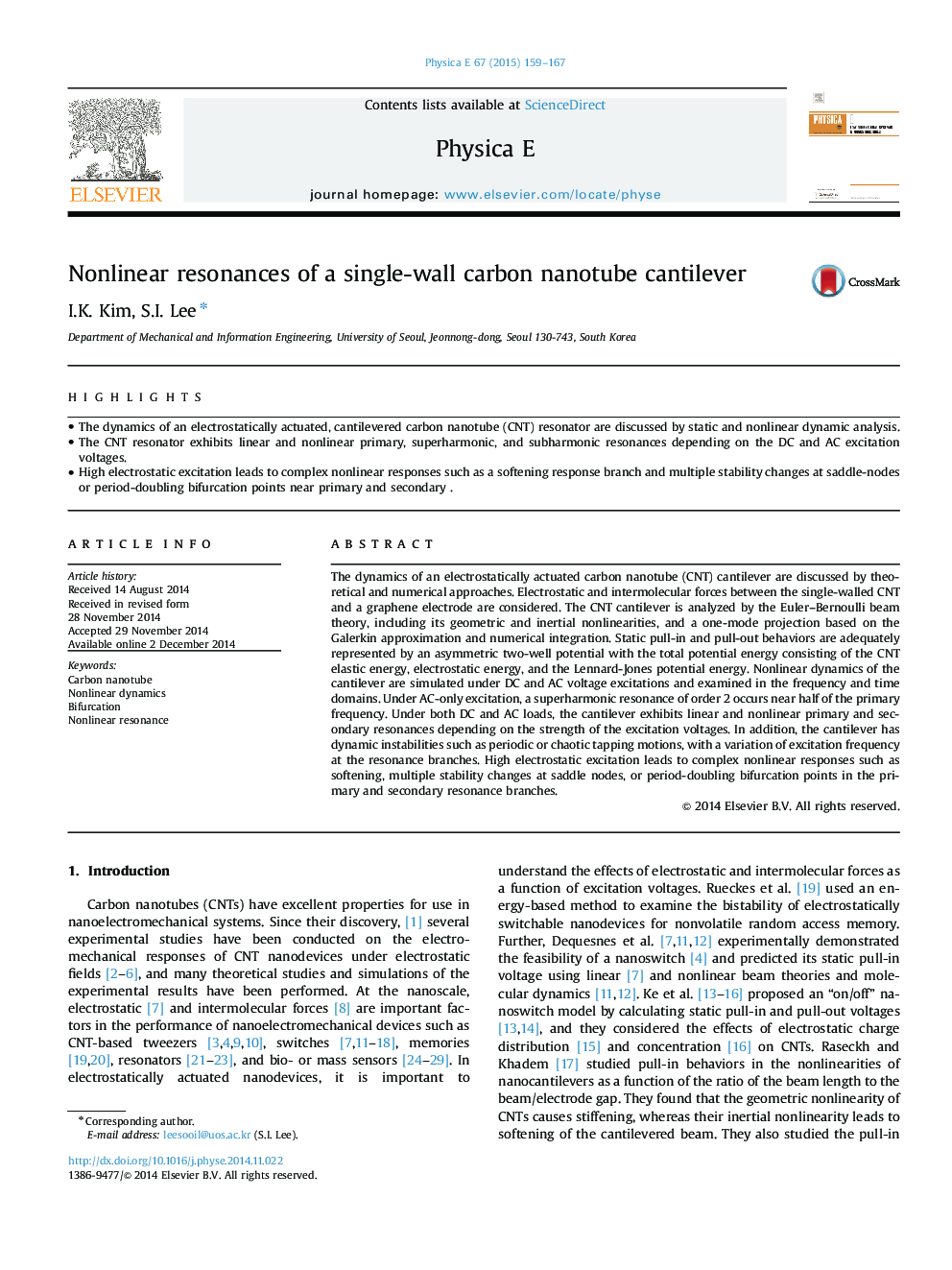| Article ID | Journal | Published Year | Pages | File Type |
|---|---|---|---|---|
| 1544446 | Physica E: Low-dimensional Systems and Nanostructures | 2015 | 9 Pages |
•The dynamics of an electrostatically actuated, cantilevered carbon nanotube (CNT) resonator are discussed by static and nonlinear dynamic analysis.•The CNT resonator exhibits linear and nonlinear primary, superharmonic, and subharmonic resonances depending on the DC and AC excitation voltages.•High electrostatic excitation leads to complex nonlinear responses such as a softening response branch and multiple stability changes at saddle-nodes or period-doubling bifurcation points near primary and secondary .
The dynamics of an electrostatically actuated carbon nanotube (CNT) cantilever are discussed by theoretical and numerical approaches. Electrostatic and intermolecular forces between the single-walled CNT and a graphene electrode are considered. The CNT cantilever is analyzed by the Euler–Bernoulli beam theory, including its geometric and inertial nonlinearities, and a one-mode projection based on the Galerkin approximation and numerical integration. Static pull-in and pull-out behaviors are adequately represented by an asymmetric two-well potential with the total potential energy consisting of the CNT elastic energy, electrostatic energy, and the Lennard-Jones potential energy. Nonlinear dynamics of the cantilever are simulated under DC and AC voltage excitations and examined in the frequency and time domains. Under AC-only excitation, a superharmonic resonance of order 2 occurs near half of the primary frequency. Under both DC and AC loads, the cantilever exhibits linear and nonlinear primary and secondary resonances depending on the strength of the excitation voltages. In addition, the cantilever has dynamic instabilities such as periodic or chaotic tapping motions, with a variation of excitation frequency at the resonance branches. High electrostatic excitation leads to complex nonlinear responses such as softening, multiple stability changes at saddle nodes, or period-doubling bifurcation points in the primary and secondary resonance branches.
